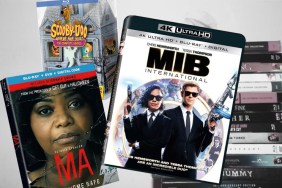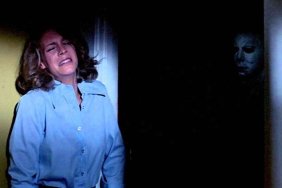
If you can establish a reusable structure for your sequels (provided you’re using the same characters in the same universe), then you can write many sequels. But be careful not to repeat yourself. Try to think of a new way to introduce your hero each time. In Raiders of the Lost Ark, Indiana Jones was introduced whipping a gun out of a guy’s hand. In Indiana Jones and the Temple of Doom, he was in a suit in a club during a musical number. In Last Crusade, he was shown as a boy. While these all may seem like very different openings, in effect, the three movies follow the same formula: Indiana Jones is already on an adventure that has little to do with the main plot of the movie. It’s only used to establish who he is, and that his life is bigger than what we get to see. Formulaic, but still effective and cool.
The third cardinal rule of sequel-making are the three essential words: Continuity, continuity, continuity. Whether you’re continuing a recent story, writing a whole new story of your own, or returning to old material years after the fact, make sure you have memorized that Bible, and have paid close attention to what came before. It’s perfectly acceptable – even encouraged – to take a sequel in a new direction (Aliens is often cited as being better than Alien), but be sure you are consistent with how the character have previously behaved, the kind of words they have used, and the events they have survived.
Important note: This does not mean (does NOT mean) that you must pepper your screenplay with straightforward references to the previous movie(s). Indeed, making multiple direct allusions through dialogue to previous movies is actually lazy writing, and begins to encroach on Rule #1. If you’re constantly referring to a previous movie, then you’re giving the impression that you would rather be making or just watching that previous movie. The same can be said of dialogue that alludes to future chapters as well. Iron Man 2, for instance, had an insufferable screenplay because of its constant foreshadow-heavy allusions to The Avengers, which hadn’t even been made yet.

The later four Harry Potter sequels are a good place to take lessons from. Since they were all made by the same director and production team, and all featured the same actors, and were all made by the same studio with similar budgets, they have some of the strongest inter-continuity of any film series. They all feel like a progression of events more than most sequels do. The Harry Potter movies follow the third rule of sequels perfectly. However, the later films, as a consequence, repeatedly violate the first rule. They do not stand as independent dramas, because they are too interested in interlocking mythologies. To get a single story, one has to watch four or five feature films in a row, all of which are over two hours.
After a while, there are no introductions, no tonal establishments, no independent stories. Just chapter after chapter in the same dang story, never concluding meaningfully, and never moving in the way a contained film ought to. There is an integrity to this commitment to continuity and detail, and many fans appreciate the stringently faithful adaptation, but as a storytelling exercise, I feel the Harry Potter movies falter considerably. They feel more like a too-long TV miniseries than a string of actual feature films.
The fourth and final rule of sequel making is this: Dramatic alterations in tone or character are actually okay, so long as you are doing it knowledgeably. Child’s Play 3 was a (crappy) horror movie, content to focus on scares and gore. The follow-up film, Bride of Chucky, was still about murder and mayhem, but the tone of the series shifted from horror to comedy. The film was self-aware, and alluded to itself in dialogue (Sample: “If this was a movie, it would take two or three sequels just to explain it.”). It was more funny than scary. You could tell, though, that this tonal shift was a conscious decision on the parts of the filmmakers. They weren’t ignoring the last film, but changing it. And you know what? Bride of Chucky is, for a late-’90s slasher film, a pretty fun flick.

Sometimes you can tell when a filmmaker is trying to cover their tracks, and “fix” any mistakes in continuity that a series had previously made. Take a look at X-Men: First Class from 2011. It was the fifth in the X-Men series, and took place before any of the previous movies. The chronology, as a result, was a little wonky, as it interfered with previously established events in the X-Men universe. It violated Rule #3: continuity. But then, this upcoming seventh X-Men film, X-Men: Days of Future Past (due for release in 2014), will use all manner of convoluted comic book logic to reconcile the fifth film with the other films in the series. Had the makers of X-Men 5 bothered to pay attention to the continuity, then this step would not be necessary. I do, however, appreciate the attempts to patch things up.
Follow these four rules, and you will be the maker of a strong and good sequel. If you want to boil these four rules into a single lesson I’d say it’s this: Pay attention to the other movies, but make yours as if it’s the only film in the series, and will only ever be the only film in the series. Write it as if there are story threads that can be followed in the future, but, first and foremost, focus on the task at hand. Make what is in front of you. Don’t make a franchise, make a good movie. The word “franchise” alludes to the business side of the film equation, and the business side is up to producers and moneymen. As a writer or director or even as a filmgoer, it’s your job to consume a single film, and a single film first. Look at the singular chapter, and judge it as a single unit.
The strongest film series will be the one that has the best singular chapters. I guarantee it.
Homework for the Week:
What sequels follow all four of my rules? What’s your favorite sequel? How many rules does it follow? Are there any exceptions to my rules? When is a sequel dramatically necessary? When is it not? What is a good example of a necessary sequel? An unnecessary one? If you were asked to make a sequel to Star Wars, and you had no knowledge of The Empire Strike Back, what kind of film would you make? How would you approach the Star Wars material, based only on the events of the first film?
Witney Seibold is a featured contributor on the CraveOnline Film Channel, co-host of The B-Movies Podcast. You can read his weekly articles Trolling, Free Film School and The Series Project, and follow him on “Twitter” at @WitneySeibold, where he is slowly losing his mind.






